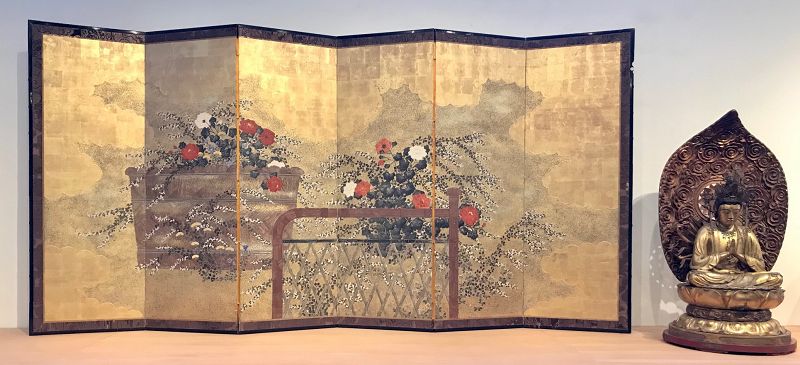- Catalog
Shop by Category
- Furniture
- Accessories
- Arms and Armament
- Architectural / Wood Carvings
- Baskets
- Contemporary & Modern Works
- Cloisonne & Enamel
- Exceptional Objects
- Metalwork
- Lacquer
- Jizai (hanging hooks)
- Netsuke and Okimono
- Tribal
- Carpet and Rugs
- Dolls
- Masks
- Musical Instruments
- Peking Glass
- Porcelain / Ceramics / Pottery
- Woodblock Prints & Related
- Religious
- Scholar Objects
- Screens / Scrolls / Paintings
- Select Sold Items
- Snuff Bottles
- Specialist Artisan
- Stone Carvings
- Terracotta
- Textiles
- Uncategorized
- Lee & Gita Caplin Family Collection
- Private Berkley Hills Collection
- Private Zentner Family Collection
- Michael Thaler (1936 - 2024)
- Japanese
Categories
- Furniture
- Accessories
- Arms and Armament
- Architectural / Wood Carvings
- Baskets
- Contemporary & Modern Works
- Cloisonne & Enamel
- Exceptional Objects
- Metalwork
- Lacquer
- Jizai (hanging hooks)
- Netsuke and Okimono
- Dolls
- Masks
- Musical Instruments
- Porcelain / Ceramics / Pottery
- Woodblock Prints & Related
- Religious
- Scholar Objects
- Screens / Scrolls / Paintings
- Select Sold Items
- Specialist Artisan
- Stone Carvings
- Terracotta
- Textiles
- Uncategorized
- Chinese
Categories
- Furniture
- Accessories
- Architectural / Wood Carvings
- Baskets
- Contemporary & Modern Works
- Cloisonne & Enamel
- Exceptional Objects
- Metalwork
- Lacquer
- Carpet and Rugs
- Dolls
- Masks
- Peking Glass
- Porcelain / Ceramics / Pottery
- Woodblock Prints & Related
- Religious
- Scholar Objects
- Screens / Scrolls / Paintings
- Snuff Bottles
- Specialist Artisan
- Stone Carvings
- Terracotta
- Textiles
- Korean
- Tibetan
FAQ
FAQ
The Most Popular Questions about Japanese Furniture, Japanese Antiques and More
Tansu (箪笥) refers to Japanese chests or cabinetry. First created during the Edo period (1688–1704), the wood most commonly used are keyaki (elm), sugi (cedar), kuri (chestnut), ezo matsu (pine), kiri (paulownia) and hinoki (cypress). Many collectors like ours focus on finding genuine antique tansu. There are few shops producing imitation antique tansu so it’s important to purchase from legitimate antique dealers.
There are many types or styles of Japanese tansu – each created for different purposes:
Learn More
- Kaidan Tansu
- Choba Tansu
- Isho Tansu
- Mizuya Tansu
- Katane Tansu
- Cha Tansu
- Kannon Biraki Tansu
Learn More
Lacquerware are objects decoratively covered with lacquer. Lacquerware includes small or large objects or containers, tableware, and furniture painted with lacquer. Before lacquering, the surface is sometimes painted with pictures, carved, or inlaid with shell and other materials. East Asian countries have long traditions of lacquer work, going back several thousand years in the cases of China, Japan and Korea. The best known lacquer, an urushiol-based lacquer common in East Asia, is derived from the dried sap of Toxicodendron vernicifluum. Other types of lacquers are processed from a variety of plants and insects. The traditions of lacquer work in Southeast Asia and the Americas are also ancient and originated independently. True lacquer is not made outside Asia, but some imitations, such as Japanning in Europe, or parallel techniques, are often loosely referred to a “lacquer.”
Source & more information here from Wikipedia.


